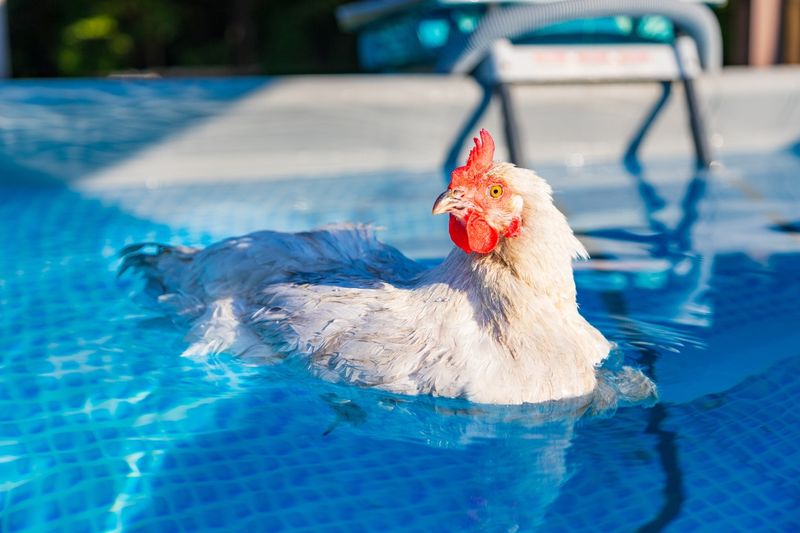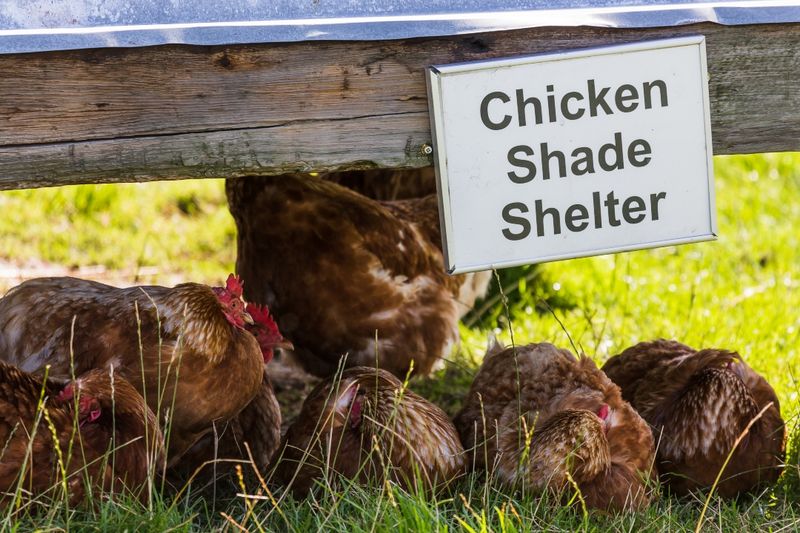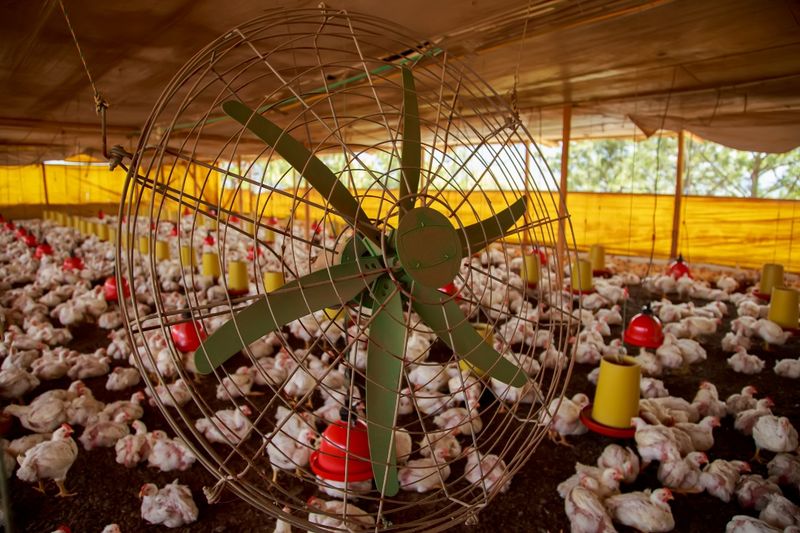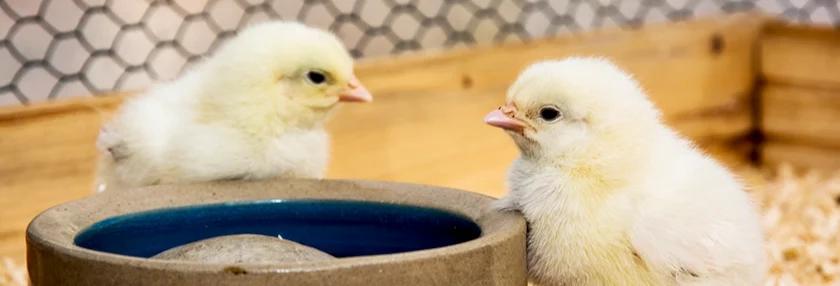From Panting to Perishing
Recognizing and Responding to Heat Stress in Chickens


When we think of poultry health concerns, winter often gets the spotlight. But for chicken keepers across the country — especially in the South and Midwest — summer is the real silent killer. While heat stroke may seem like a problem exclusive to humans and pets, chickens and other poultry are equally vulnerable. In fact, high temperatures combined with humidity can lead to sudden losses in otherwise healthy flocks.
For newer poultry keepers, navigating your first brutally hot season can be daunting. Understanding the physiology of heat stress, knowing which birds are most susceptible, recognizing early warning signs and applying timely interventions can make all the difference between survival and heartbreak.
Why Chickens Struggle in Heat
Unlike humans, chickens lack sweat glands. Their only way to cool themselves is through evaporative heat loss — by panting, holding their wings away from their bodies and reducing physical activity. This system works — up to a point. Once outside temperatures climb beyond 85 degrees Fahrenheit, especially when paired with high humidity, their ability to shed heat begins to fail.
When a bird’s internal temperature rises above 107 degrees Fahrenheit, their body starts to break down on a cellular level. Proteins destabilize; enzyme function halts and vital organs can shut down. Without intervention, a chicken in full-blown heat stroke may perish in a matter of minutes — and it’s not always the bird you expect.

Breeds and Birds Most at Risk
While all chickens can suffer in extreme heat, some are more vulnerable than others. Here’s a breakdown of who’s most at risk:
- Large, heavy-bodied breeds such as Cornish Cross, Orpingtons, Brahmas and Jersey Giants produce more body heat and have a harder time releasing it.
- Birds with dark feathers absorb more solar radiation compared to their lighter-colored flock mates.
- Chickens with small combs — like Silkies or Chanteclers — have fewer vascular structures available for heat dissipation.
- Older birds, or those already struggling with respiratory illness or parasites, may succumb faster than younger, fitter birds.
- Confined flocks in small coops without ventilation fare far worse than free-range birds who can seek cooler spots or airflow.
Early Signs: When a Bird is Overheating
Heat stress can escalate fast, so being able to spot the early indicators is critical. Don’t assume your chickens will “get used to it” or push through.
Signs of mild to moderate heat stress include:
- Panting or open-mouth breathing.
- Lethargy, decreased activity or interest in food.
- Wings held out and downward, away from the body.
- Pale or flushed combs and wattles, watch for changes in color that signal health issues.
- Loose, watery droppings, this can be a sign of digestive upset or infection.
- Reduced egg production or soft-shelled eggs.
If you observe staggering, trembling, disorientation or collapse, you’re likely dealing with advanced heat stroke. Immediate emergency action is necessary.
What To Do: Emergency Interventions
If you notice signs of heat stress, move quickly. Even a short delay can lead to organ failure or death. Here’s how to cool your bird down safely:
- Relocate the bird to a shaded or cooler space.
- Mist gently with cool (not cold) water, focusing on legs and underwings. Avoid drenching the bird suddenly, as shock is a risk.
- Offer electrolytes in lukewarm water. Commercial poultry electrolyte mixes or homemade solutions — water with a pinch of salt, a bit of baking soda and a dash of sugar — can help restore balance.
- Avoid feeding heavy grains or protein treats during the hottest part of the day, as digestion increases internal heat load.
- Apply cool, wet towels around the bird if misting isn’t enough.
For birds that are severely distressed and non-responsive, veterinary care — including subcutaneous fluids — may be necessary.

Science-Backed Tools: Don’t Ditch the Data
Newer poultry keepers can benefit from tech, too. Consider investing in:
Digital thermometers inside the coop and run.
Remote humidity sensors to monitor moisture levels from afar.
Infrared thermometers to check bird temps from a safe distance.
Timed misting systems to automatically cool the environment.
These tools help identify when interventions are needed — before the birds show signs of distress.
Heat-Proofing Your Flock: Prevention Tips
The best defense is a good offense. If you’re expecting temperatures over 90 degrees Fahrenheit, take these steps early in the day:
- Provide deep shade using tarps, shade cloth, trees or even moveable structures. Rotate their position as the sun moves.
- Ventilate the coop with fans or open windows. Solar-powered fans are excellent for off-grid setups.
- Offer multiple water stations with fresh, clean, cool water. Chickens often won’t travel far in the heat, so place them throughout the run.
- Float frozen water bottles or ice blocks in waterers. Chickens won’t drink ice water directly, but the cooling effect keeps water temperatures down.
- Give frozen fruit or veggie treats (like squash or watermelon) in the afternoon to encourage hydration.
- Spray down dust-bathing zones or coop flooring to reduce radiant heat.
- Avoid overcrowding — each bird needs enough room to move and find airflow.

If you live in a persistently hot climate, consider breeding or selecting heat-hardy breeds such as Leghorns, Fayoumis or Andalusians for long-term flock sustainability.
Heat stress is a preventable tragedy that sneaks up quickly. One minute your flock may look fine — the next, you’re facing the heartbreaking loss of a beloved hen. For those keeping poultry for the first time, the urgency and seriousness of summer heat can be surprising. But with good preparation, proper care and a watchful eye, your birds can weather even the harshest summer.
And when cooler weather finally returns, you’ll rest easier knowing your flock survived not just because they were lucky — but because you were prepared.
About the Author:
Alexandra Doss has been working with poultry for over 18 years. Known as the Quail Lady, since Coturnix quail was her first specialty on her selective breeding operation, Stellar Game Birds, Poultry, Waterfowl LLC in Florida. She has written books on Coturnix husbandry. She and her husband focus on breeding heritage animals and breed preservation.
Tags:Chicken Chatter

Acreage Life is part of the Catalyst Communications Network publication family.














